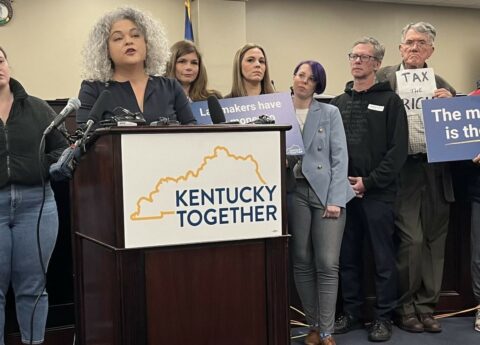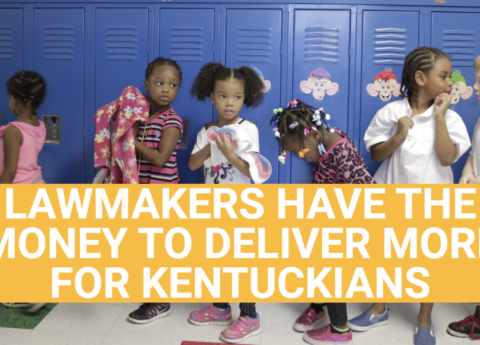Kentucky is one of the worst states when it comes to elementary and secondary education funding cuts since 2008, according to a report released today by the Center on Budget and Policy Priorities, a nonpartisan policy research organization based in Washington, DC.
Kentucky is 10th worst in the country when it comes to overall state K-12 funding cuts between 2008 and 2014, with a decline in per student funding of 12.1 percent once inflation is taken into account. The state ranks 6th worst when it comes to cuts in its core formula funding for local schools – which in Kentucky is known as SEEK – with a decline of 10.6 percent from 2008 to 2016. The state is also one of only 12 states that continued to cut education funding this current fiscal year.
This erosion in support has damaging consequences that threaten the quality of education and the state’s economic growth.
“A well-educated workforce is critical to growing the state’s economy,” said Ashley Spalding, research and policy associate for the Kentucky Center of Economic Policy. “By reducing investments in K-12 education, we are not only short-changing Kentucky’s kids but also the state’s future.”
State funding amounts for K-12 education in Kentucky have been relatively flat since the recession – and SEEK funding even increased some in the last budget – but once growth in the number of students is factored in along with inflation, these appropriations are experienced as cuts.
Declining state investment makes it difficult for Kentucky to reach the high academic goals it has set. Poorer school districts feel the state budget cuts particularly hard as they are less able to make up for cuts with local property taxes.
“At a time when the nation is trying to produce workers with the skills to master new technologies and adapt to the complexities of a global economy, states should be investing more — not less — so our kids get a strong education,” said Michael Leachman, director of state fiscal research at the Center on Budget and Policy Priorities and co-author of the report released today.
The Center’s full report can be found here.



